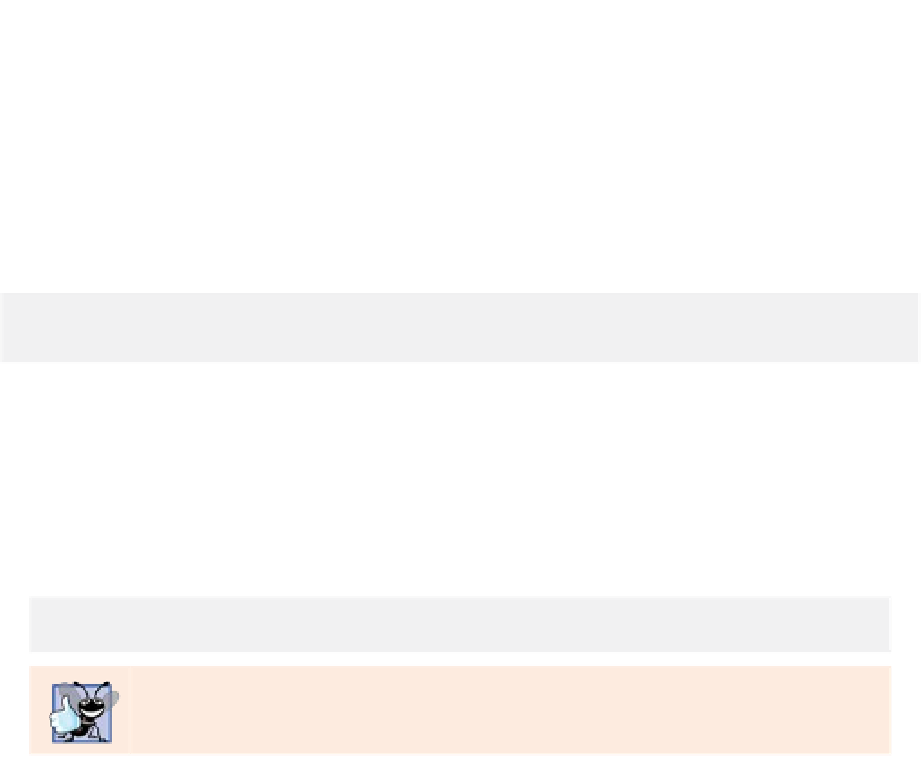Java Reference
In-Depth Information
6
public static void
main(String[] args)
7
{
8
int
total =
0
;
9
10
// total even integers from 2 through 20
11
for
(
int
number =
2
; number <=
20
; number +=
2
)
total += number;
12
13
14
System.out.printf(
"Sum is %d%n"
, total);
15
}
16
}
// end class Sum
Sum is 110
Fig. 5.5
|
Summing integers with the
for
statement. (Part 2 of 2.)
The
initialization
and
increment
expressions can be comma-separated lists that enable
you to use multiple initialization expressions or multiple increment expressions. For
example,
although this is discouraged
, you could merge the body of the
for
statement in
lines 11-12 of Fig. 5.5 into the increment portion of the
for
header by using a comma as
follows:
for
(
int
number =
2
; number <=
20
; total += number, number +=
2
)
;
// empty statement
Good Programming Practice 5.1
For readability limit the size of control-statement headers to a single line if possible.
Application: Compound-Interest Calculations
Let's use the
for
statement to compute compound interest. Consider the following prob-
lem:
A person invests $1,000 in a savings account yielding 5% interest. Assuming that all
the interest is left on deposit, calculate and print the amount of money in the account
at the end of each year for 10 years. Use the following formula to determine the
amounts:
a = p
(1 +
r
)
n
where
p
is the original amount invested (i.e., the principal)
r
is the annual interest rate (e.g., use 0.05 for 5%)
n
is the number of years
a
is the amount on deposit at the end of the
n
th year.
The solution to this problem (Fig. 5.6) involves a loop that performs the indicated
calculation for each of the 10 years the money remains on deposit. Lines 8-10 in method
main
declare
double
variables
amount
,
principal
and
rate
, and initialize
principal
to
1000.0
and
rate
to
0.05
. Java treats floating-point constants like
1000.0
and
0.05
as type
double
. Similarly, Java treats whole-number constants like
7
and
-22
as type
int
.









